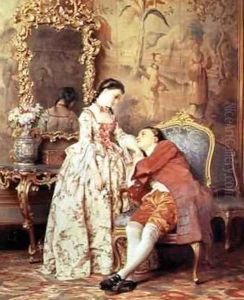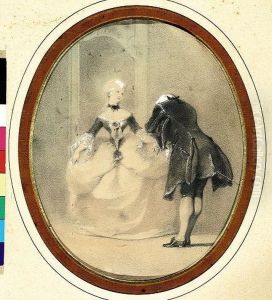Guido Gonin Paintings
Guido Gonin was an Italian painter and illustrator mainly active during the 19th century. Born in 1808 in the Kingdom of Sardinia, which later became part of modern Italy, Gonin developed an interest in art at a young age. He studied at the Albertina Academy in Turin, where he honed his skills in painting and drawing.
Gonin's work was primarily influenced by the Romantic movement, which was prevalent in Europe during his time. Romanticism was characterized by its emphasis on emotion, individualism, and the glorification of the past and nature, contrasting with the Enlightenment's focus on reason and science. Gonin's paintings often reflected these romantic ideals, imbued with a sense of drama, vibrant color, and a fascination with historical and mythological subjects.
Throughout his career, Guido Gonin became well-known for his historical paintings, which were sought after by patrons who desired to adorn their estates and public buildings with grand, narrative works. He was also recognized for his religious compositions, which were commissioned by various churches in the region. Gonin's ability to capture the emotional depth and spiritual significance of these subjects contributed to his reputation as a skilled painter of the Romantic period.
In addition to his larger canvases, Guido Gonin was proficient in creating illustrations for books and literary works. His illustrations helped to visualize the stories and poems that were popular during his lifetime, making them more accessible to the public. This aspect of his work reflects the broader 19th-century trend of integrating visual art with literary culture, which was facilitated by advances in printing technology.
Gonin's contribution to the Italian art scene was significant, and his works were exhibited in various salons and exhibitions. Despite not being as widely known today as some of his contemporaries, Gonin's paintings and illustrations remain valuable for their historical context and artistic merit. He passed away in 1889, leaving behind a legacy of art that continues to be studied and appreciated by art historians and enthusiasts.


